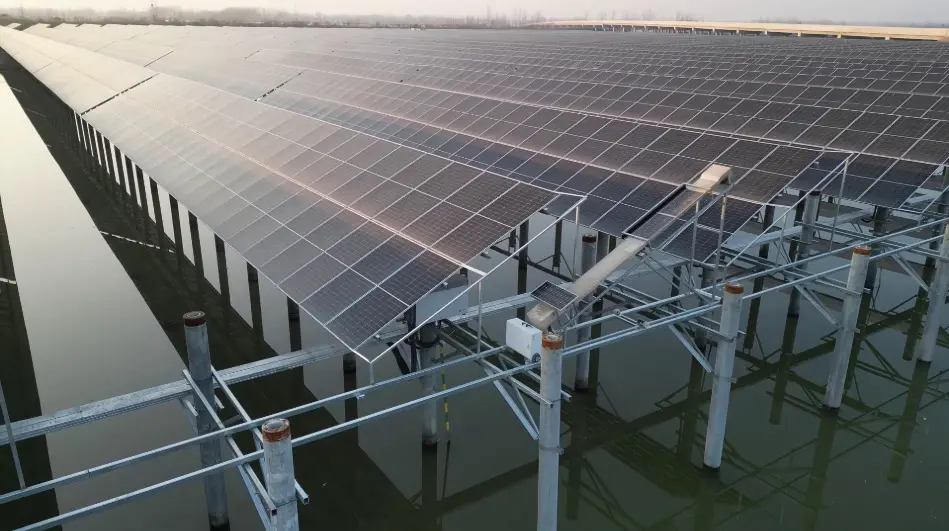Background
With the increasing global demand for clean energy, solar energy has emerged as an important source of renewable energy. However, photovoltaic (PV) panels accumulate dust, bird droppings, and other pollutants over time. These contaminants not only reduce the efficiency of light-to-electricity conversion but may also cause the “heat island effect,” leading to the aging or damage of PV panels. Therefore, there is an urgent need to design an efficient solar panel cleaning robot.
In southern China’s wetland and hilly areas, abundant solar resources exist, but the complex terrain and elevated installation locations of PV panels make traditional cleaning methods (such as passive cleaning under natural conditions, manual cleaning, and mechanical cleaning) inefficient and unsafe. This has prompted researchers to develop PV panel cleaning robots based on visual and photoelectric sensors to address these challenges.

Structural Composition
Mechanical Components
- Frame: The robot uses an aluminum alloy frame to prevent rust and reduce its overall weight.
- Mobility Mechanism: The walking mechanism includes primary and auxiliary wheels, tracks, and guide wheels to ensure stable movement on inclined PV panels.
- Cleaning Mechanism: This consists of a roller-type brush, spraying device, and blowing device, allowing for various cleaning modes such as dry cleaning, water cleaning, and blowing dry.
Control Components
- Control System: Uses an STM32 microcontroller for high reliability and operating speed.
- Sensor System: Includes visual sensors, photoelectric sensors, and limit switches to detect the edges of PV panels, lighting conditions, and the robot’s position.
- Drive System: Employs DC geared motors with strong anti-interference capabilities and rapid dynamic response.
- Cleaning System: Consists of a spraying device, blowing device, and brush roller to cover the PV panel surface completely during cleaning.
Implementation Measures
Mobility Mechanism Design
- The robot adjusts the tension of the tracks using tensioning wheels, and the support and guiding wheels maintain proper track operations.
- The side guiding wheels use rubber-coated wheels for better vibration absorption and resistance to mechanical impacts, allowing rolling along the edges of the PV panels to prevent sliding.
Cleaning Mechanism Design
- The cleaning roller uses nylon filament brushes with a helical structure and differential rotation to enhance cleaning efficiency.
- The spraying and blowing devices increase the coverage area during cleaning and reduce water usage costs.
Control System Design
- The control signals are transmitted via Bluetooth serial communication, allowing the upper computer to adjust the device and control the cleaning simulation on a demonstration board resembling the PV panel.
- The light detection system and limit switches enable intelligent control based on variations in ambient light and boundary distance, allowing the robot to start or stop automatically.
Suction System Design
- To maintain stability on inclined PV panels, the robot requires adequate suction power. Calculations indicate that a suction force greater than 33.62 N allows the robot to traverse wet surfaces.
- Two vacuum generators are employed, with suction cups arranged between the primary and auxiliary wheels to minimize suction loss from negative pressure leaks.
Experiment Results
Cleaning Efficiency
- The robot operates stably on slopes below 25°, achieving a cleaning efficiency of 50 m²/h.
- Dust removal rate reaches 91.16%, with an average positioning error of bird droppings at 1.38 mm.
Stability
- Throughout the experiments, the robot effectively performed back-and-forth sweeping actions with smooth motion and minimal overall body vibration.
- The robot adhered tightly to the surface of the PV panels, successfully avoiding any falls during multiple tests.
Cleaning Effectiveness
- The surface of the PV panels post-cleaning showed no significant particles of dust, meeting the cleaning requirements.
- The coverage rate was 100%, with an overall cleaning cleanliness exceeding 95%, thereby enhancing the electricity generation efficiency of the cleaned area by approximately 20%.
Unique Advantages of the Todo Smart Solar Panel Cleaning Robot
Enhanced Intelligence
- By further optimizing the fusion of visual and photoelectric sensors, the robot’s path planning accuracy and the intelligence of its cleaning strategy can be improved.
Cost Reduction
- The use of a single motor drive structure minimizes the number of motors required, thereby lowering costs.
Expanded Applicability
- Future research will focus on developing cleaning robots suitable for various terrains and environmental conditions to meet the needs of diverse types of solar power plants.
Automatic Detection
- Utilizing intelligent detection methods for automatic recognition of cleaning quality will further enhance the functionality of the control system, improving the autonomy and reliability of the robots.
In conclusion, the solar panel cleaning robot is a vital development to meet the increasing demand for clean energy while addressing the challenges posed by maintaining the efficiency of PV panels. Through intelligent design and implementation, this project presents a promising solution for enhancing solar energy production efficiency.